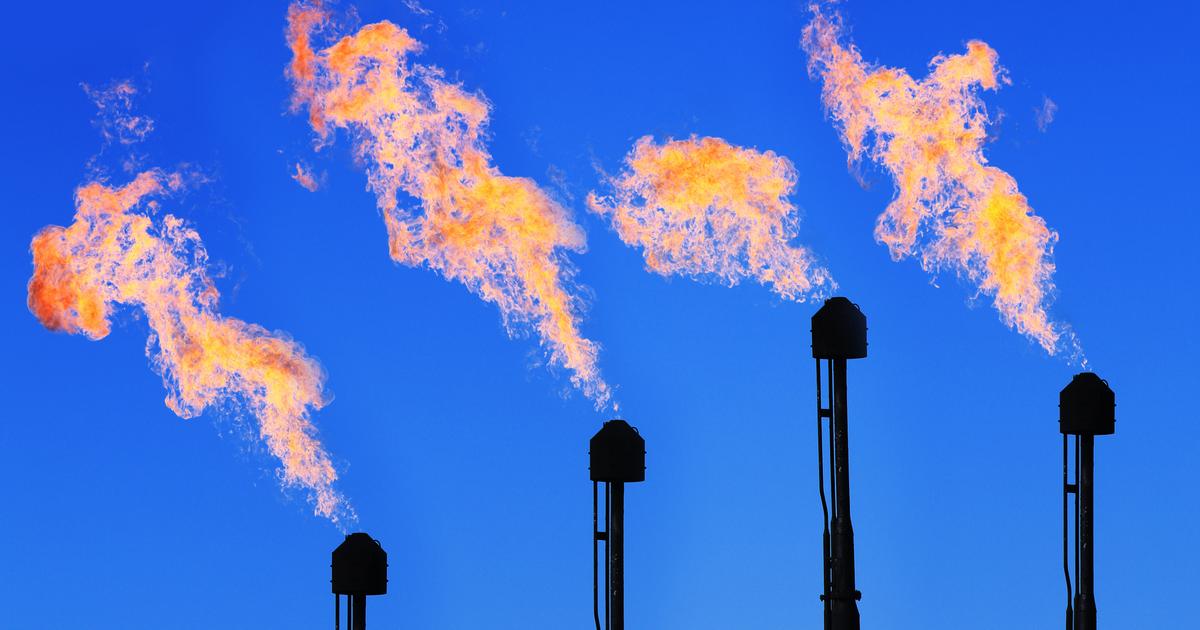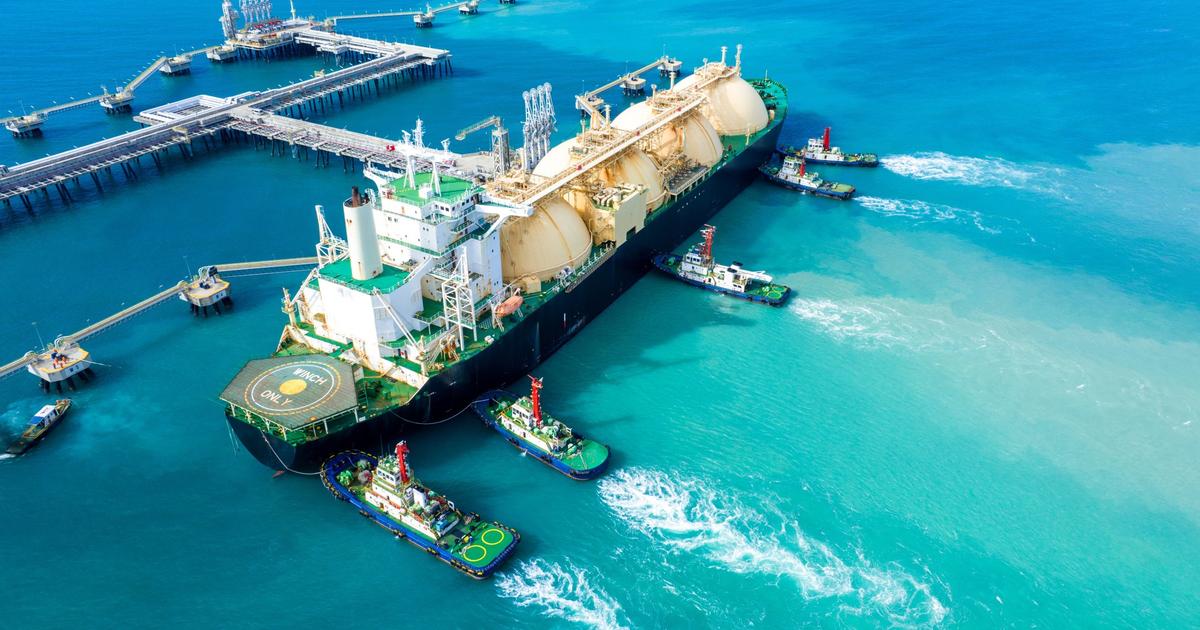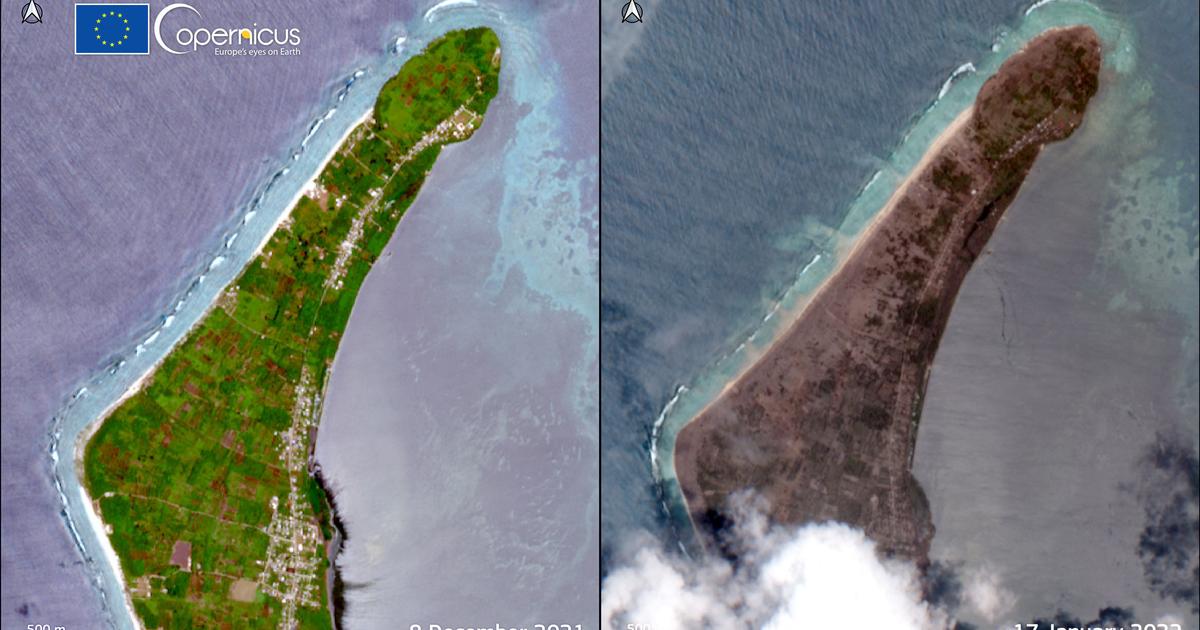Air bubbles trapped in ice almost three centuries ago indicate that methane emissions caused by humans are greater than previously thought. This greenhouse gas reaches the atmosphere from many sources, both natural and anthropogenic. Now, a study of frozen cylinders has allowed to spread the responsibility with greater success. The work reduces the natural contribution of geological origin and raises the emissions that come from the extraction and burning of fossil fuels.
Methane is one of the most potent greenhouse gases. Formed by molecules of four atoms of hydrogen and one of carbon (CH4) it retains up to 28 times more solar radiation than carbon dioxide (CO2) in a span of 100 years. Fortunately, its concentration is tens of times lower and its half-life in the atmosphere is barely nine years, compared to the decades that CO2 remains. Therefore, its reduction would have an almost immediate effect on ongoing global warming. The problem is that even knowing the amount of methane in the atmosphere, science has not yet distributed the blame between the different sources of gas.
Now, a large group of scientists have turned to ice cores extracted in Greenland and Antarctica to know what the atmosphere of the past was like. Like tree rings, ice accumulates in annual layers and small air bubbles are trapped inside each layer. His analysis has allowed to know the concentration of methane. The oldest samples they have used date back to 1750, that is, decades before coal (and then gas and oil) fed the machines of the Industrial Revolution. In this way, they were able to determine the origin of gas there was and, on that basis, better estimate the subsequent human contribution. Since then, the presence of CH4 in the air has multiplied by 150%.
With this study, human activities would be responsible for almost 75% of CH4 emissions
As published in Nature , current methane emissions from the extraction, transportation and burning of different fossil fuels (coal, gas and oil) would be around 177 million tons per year, with a margin of 37 million above or below. That would mean raising the contribution of these hydrocarbons to a total of up to 55%. The uncertainty comes from how complicated it is to determine the origin of each gram of methane in the atmosphere today.
The main natural source of gas is the decomposition of organic matter that occurs in humid environments with little oxygen. In fact, methane is also known as swamp gas. Other natural sources would be the digestion of ruminants and forest fires. A third would be geological leaks, such as those from volcanic sludge or leaks from natural deposits, such as permafrost or methane hydrates at the bottom of the sea. This geological or fossil and organic methane are distinguished because the carbon they contain has a different atomic composition (see support).
Until now, the estimation of natural emissions of geological methane was around 40 to 60 million tons per year, about 10% of the total gas that reaches the atmosphere each year. However, the study of the air of three centuries ago lowers the figure to between a minimum of 1.6 million and a maximum of 5.4 million tons, that is, 1% at most of the total. So the rest would have to be endorsed to the extraction and burning of fossil fuels by humans. The last report of the Global Carbon Project calculated that, since 2012, about 560 million tons of methane come into the atmosphere every year. It was estimated that, before the study of these ice cores, between half and two thirds of these emissions were caused by human activities.
"Our data indicates that anthropogenic emissions are much higher, close to 75%," says the lead author of the article, the University of Rochester researcher Benjamin Hmiel, in an email. "I want to think it's good news," he adds. "As our results indicate that the anthropogenic component is greater, this puts more emissions under human control. So, in practice, we have more capacity to mitigate ongoing global warming than previously thought if we reduce these emissions by the future".
The director of the Global Carbon Project, the Catalan Pep Canadell, clarifies: "In the atmosphere there is the same methane, what changes is the attribution". This CSIRO researcher, the Australian government's scientific research agency, has been studying CO2 and CH4 emissions for years. "What this study means [in which it has not intervened] is that fossil fuel emissions are much larger than we thought," he adds. "These new data are relevant for planning mitigation strategies," concludes a Canadell who is also one of the coordinators of the next report of the Intergovernmental Panel on Climate Change, the AR6, which will be published in 2021 and will mark the short-term fight against the climate change.
The 'permafrost' will not be the dreaded methane bomb
M.Á.C
The same researchers who have analyzed methane trapped in ice three centuries ago have done the same with air bubbles from 15,000 to 8,000 years ago.
With a dozen ice cylinders recovered from Antarctica and Greenland, scientists sought in the past the answer to one of the questions that most worries science: What will happen to the huge amounts of gases trapped in the permanently icy lands of the Siberian taiga, the Tibet plateau or northern Canada, known as permafrost ? What impact will the increase in temperature have on the fragile balance between pressure and temperature that keeps tons and tons of methane trapped by the almost icy water of the deep sea?
"We have shown that when permafrost melted in the past, not much methane was produced, so it is unlikely that current permafrost will generate much," says the University of Rochester researcher and lead author of this Second study Michael Dyonisius.
The work, published in Science , dates back to the end of the last glaciation, a thaw that occurred over several millennia, with the removal of ice from most of the northern hemisphere to its current borders. It is estimated that the global average temperature rose by about 4º, a rise similar to that drawn by some current climate change scenarios, although more gradual.
The ice analysis reveals that there was a significant increase in methane in the atmosphere, but "our study shows that this increase in emissions was not due to fossil sources [ permafrost and methane hydrates], should come from contemporary sources," Dyonisius explains. By contemporaries it refers to those of natural origin, such as swamps or biomass burning.
To differentiate one methane from another after thousands of years, scientists relied on carbon 14. This carbon isotope is radioactive and is the best watch archeologists have on hand. The 14C has a known half-life of 5,730 years. As the last glaciation lasted more than 100,000 years, the methane of fossil origin could no longer contain carbon 14. Thus they found that neither permafrost nor methane hydrates contributed much methane in that warming. And, therefore, as these researchers conclude, the melting of the current permafrost will not be the methane bomb that many feared.













/cloudfront-eu-central-1.images.arcpublishing.com/prisa/KMEYMJKESBAZBE4MRBAM4TGHIQ.jpg)

